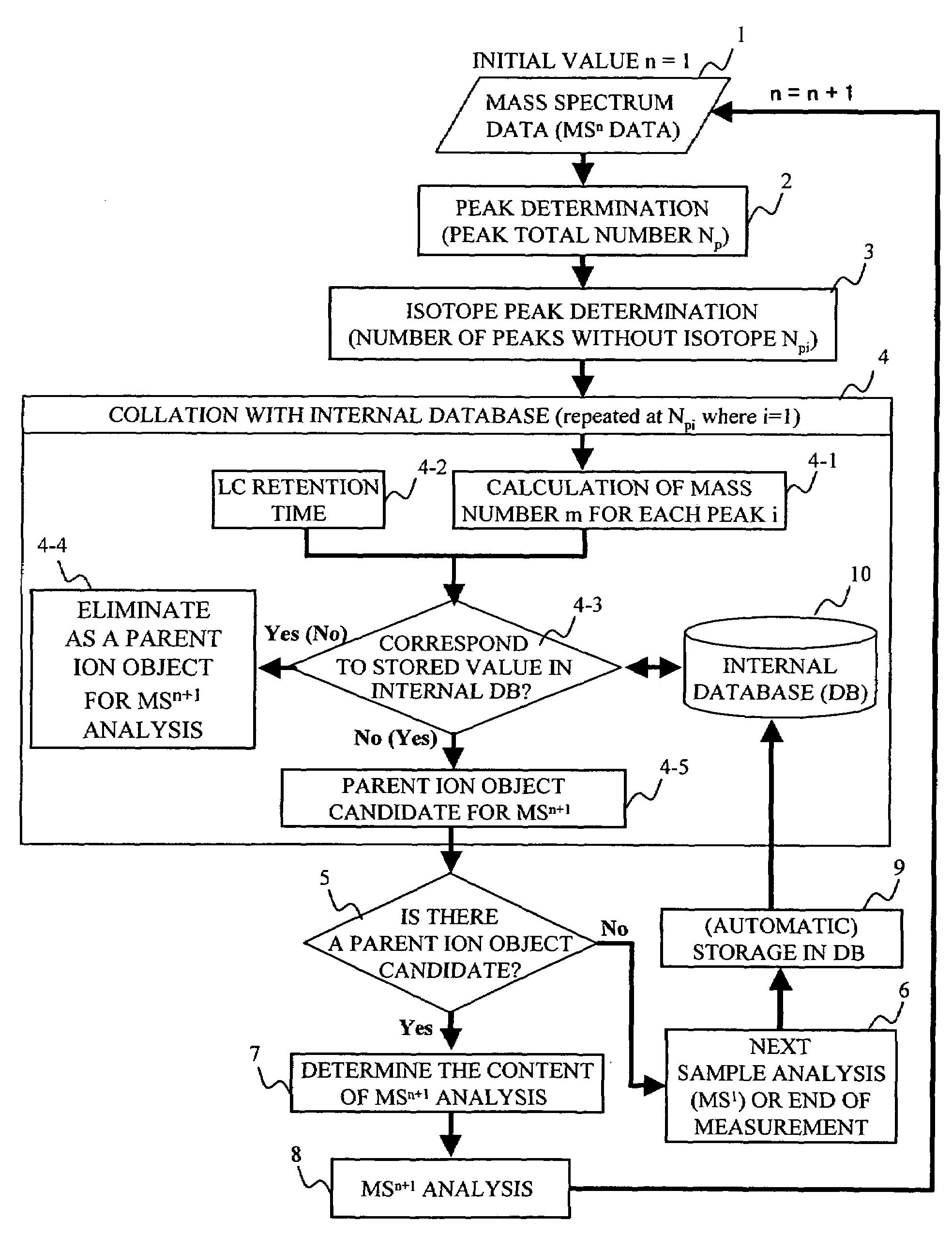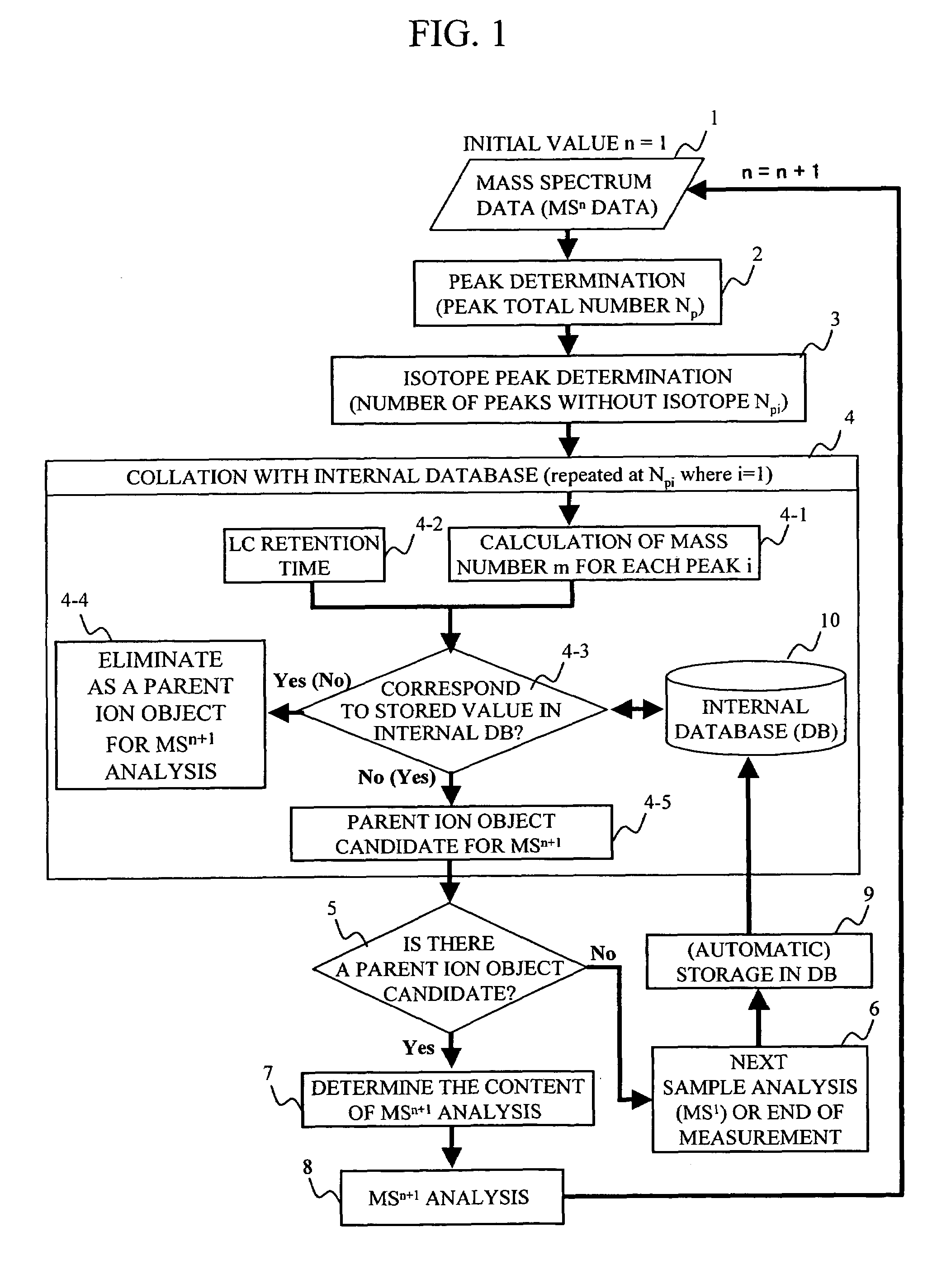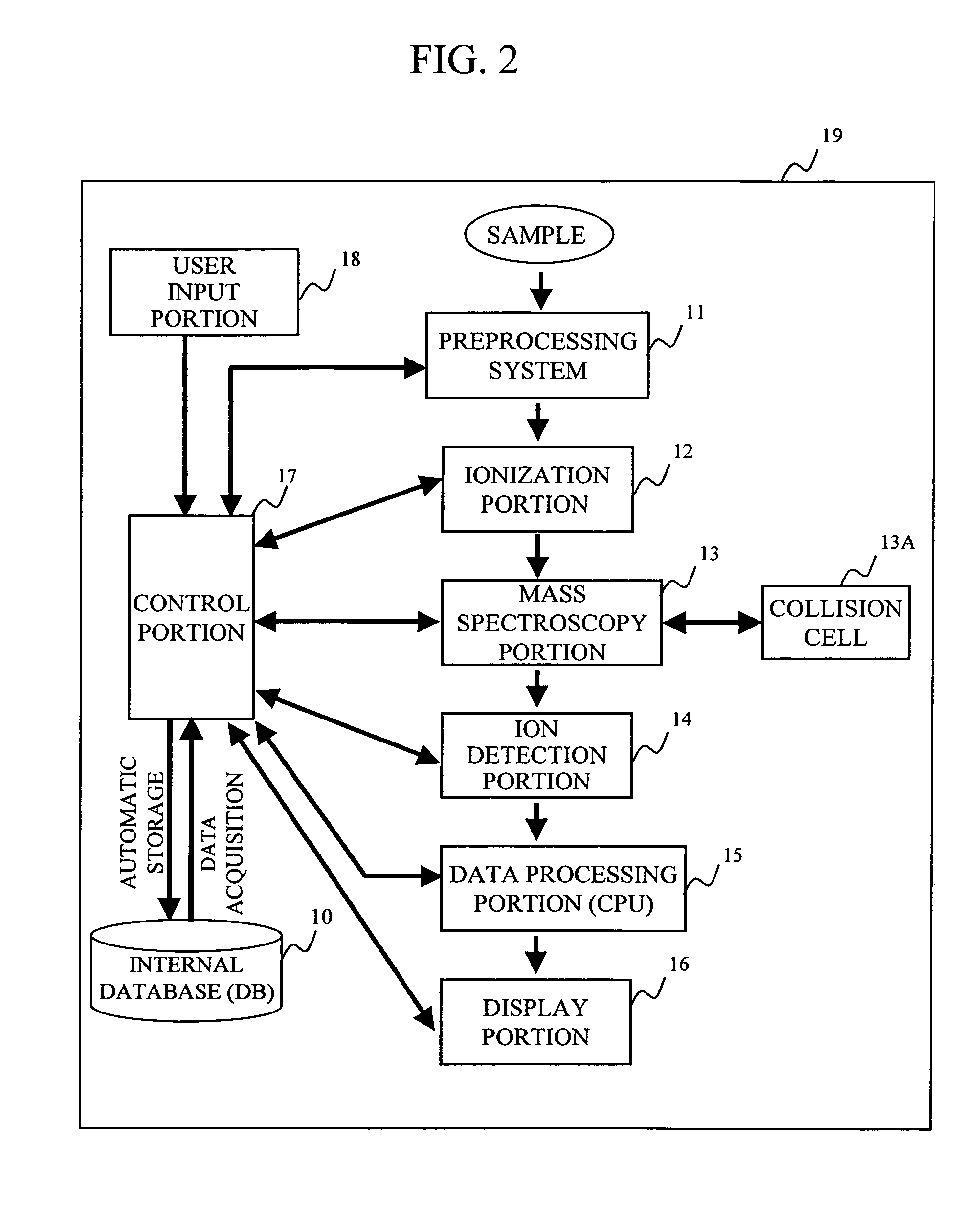Mass spectrometer system
a mass spectrometer and spectrum analysis technology, applied in the field of mass spectroscopy spectrum analysis system, can solve the problems of inability to say that appropriate information has been utilized for efficient selection of ions, waste of measurement time and sample, and difficulty in tandem analysis of minute amounts of proteins in detail, so as to avoid the influence of non-analysis object ions
- Summary
- Abstract
- Description
- Claims
- Application Information
AI Technical Summary
Benefits of technology
Problems solved by technology
Method used
Image
Examples
third embodiment
[0124]With reference to FIGS. 3C and 13, the invention is described. In this embodiment, MSn is performed again as the next tandem mass spectroscopy, instead of MSn+1. Specifically, an ion peak with a different m / z value from that of the parent ion that has been the target during the measurement of the MSn spectrum is selected from the MSn−1 ion peaks, and then MSn is repeated. This concept is shown in FIG. 3C. For example, in a case where an ion peak with m / z=1000 (m=1000, z=1) is selected as the parent ion in MS1 and, when an MS2 analysis is performed, there is not much dissociation spectrum of MS2 and it is determined that the result is insufficient for the identification of an amino acid sequence, an ion peak with the same mass number of the target and a different valence (m / z=500, (m=1000, z=2)) is selected in MS1 as the parent ion, and MS2 is carried out again. In this case, since the m / z of the parent ion becomes one half, the operation conditions or the like may be changed s...
fourth embodiment
[0125]Hereafter, the invention will be described with reference to FIG. 14. In this embodiment, the collation process 4 referring to the internal database is not performed, and mainly the determination of the isotope peaks is performed. With regard to the peaks that are determined to be not isotope peaks, the targets for the next tandem mass spectroscopy may be determined in the order of decreasing intensity, as is conventionally done. As shown in FIG. 15, the intensity of isotope peaks becomes greater with increasing mass number. If the peaks are subjected to tandem mass spectroscopy simply in the order of decreasing intensity of the peaks, as is conventionally done, an isotope peak might be erroneously selected as a parent peak. If that happens, the m / z of the mass spectrum is displaced due to the isotope, thereby increasing the likelihood that the result of data analysis exhibits a pseudo-positive reaction. In accordance with the present embodiment, only those peaks without isoto...
fifth embodiment
[0126]Hereafter, the invention will be described with reference to FIGS. 15 and 16. In this embodiment, instead of performing the isotope determination process 3 as shown in FIG. 6, isotope intensity distribution patterns corresponding to mass numbers, as shown in FIG. 15, are stored in advance, and the determination as to whether or not a particular peak is an isotope is made by matching those patterns with actual measurement data. The flow of this process is shown in FIG. 16. In accordance with the present embodiment, only the matching process is carried out without performing the isotope peak intensity distribution calculation in real time, so that it is possible to perform the isotope determination process more reliably in real time.
PUM
| Property | Measurement | Unit |
|---|---|---|
| mass number | aaaaa | aaaaa |
| transition time | aaaaa | aaaaa |
| transition time | aaaaa | aaaaa |
Abstract
Description
Claims
Application Information
 Login to View More
Login to View More - R&D
- Intellectual Property
- Life Sciences
- Materials
- Tech Scout
- Unparalleled Data Quality
- Higher Quality Content
- 60% Fewer Hallucinations
Browse by: Latest US Patents, China's latest patents, Technical Efficacy Thesaurus, Application Domain, Technology Topic, Popular Technical Reports.
© 2025 PatSnap. All rights reserved.Legal|Privacy policy|Modern Slavery Act Transparency Statement|Sitemap|About US| Contact US: help@patsnap.com



